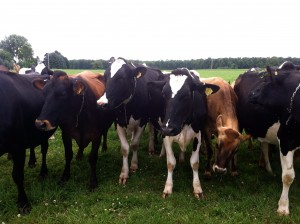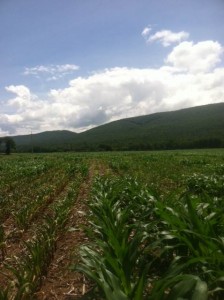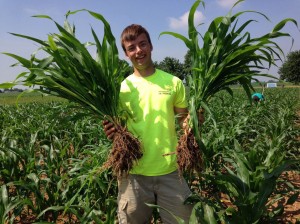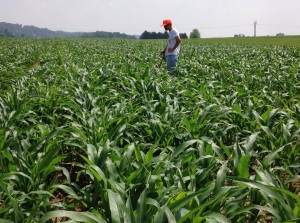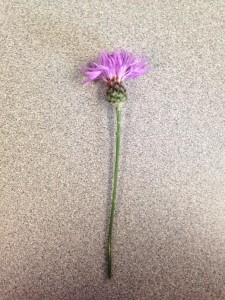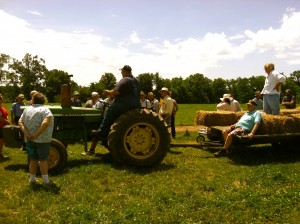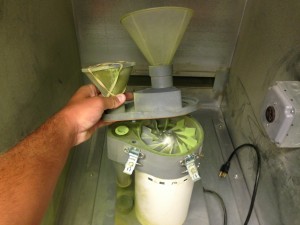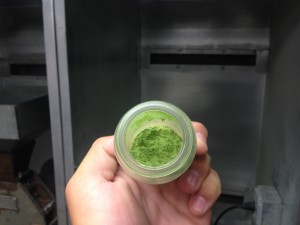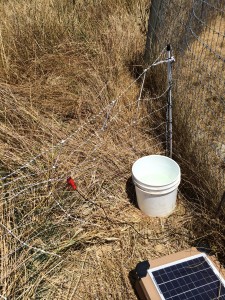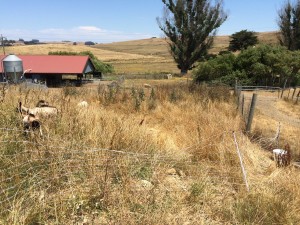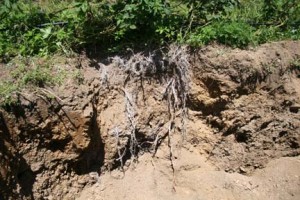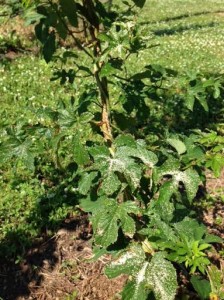Learning about dairy cows has been one of my favorite parts of this internship so far. This week I attended a pasture walk in Clifton Springs New York where the main focus of the discussion was geared towards fly control. If you’ve ever lived on or near a dairy farm, you’ve probably experienced how pesky these little insects can be. Fly populations on dairy farms can sometimes become so out of control that it is a stress to the cows and will lower milk production, not to mention the fact that it is a sanitation issue. Too many flies can cause in increase in the bacterial counts in milk and some can transmit diseases or parasites to the animals. Although there are different types of traps, chemicals and farm management practices that will help lower the fly population some farmers take extra measures to ensure that their herd stays stress free and clean. At Steve and Hope Galen’s organic dairy farm in Clifton Springs they have installed a fly vacuum that the cows must walk through each time they enter the barn to be milked. According to Steve some cows have learned to even enjoy the machine! The machine costs around $7,500 which seems very expensive, but it has made a world of difference for these dairy cows. As the cows pass though the vacuum each day and are collected, it decreases the opportunity for the flies to breed. Almost no house flies, horn flies or stable flies were bothering these cows, but face flies are not so easily taken care of and remain a pest on the farm. Maybe someday a face fly vacuum will be of help on the farm as well, but for now the Cow Vac seems to be doing really well.

